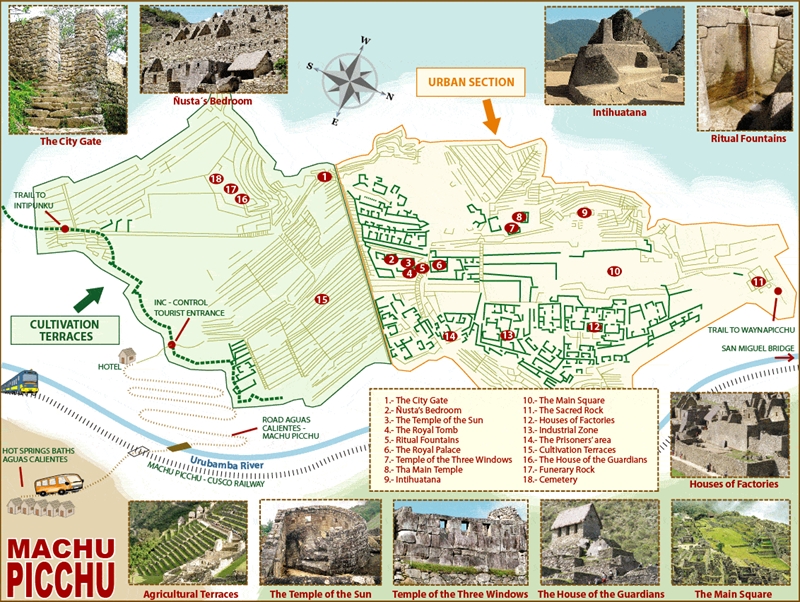A drawing of how National Geographic imagines Machu Picchu looked when the Inca's ruled. The ruler when it was built was Pachacutec (PAH-chah-koo-teck). He started the Inca royal dynasty.
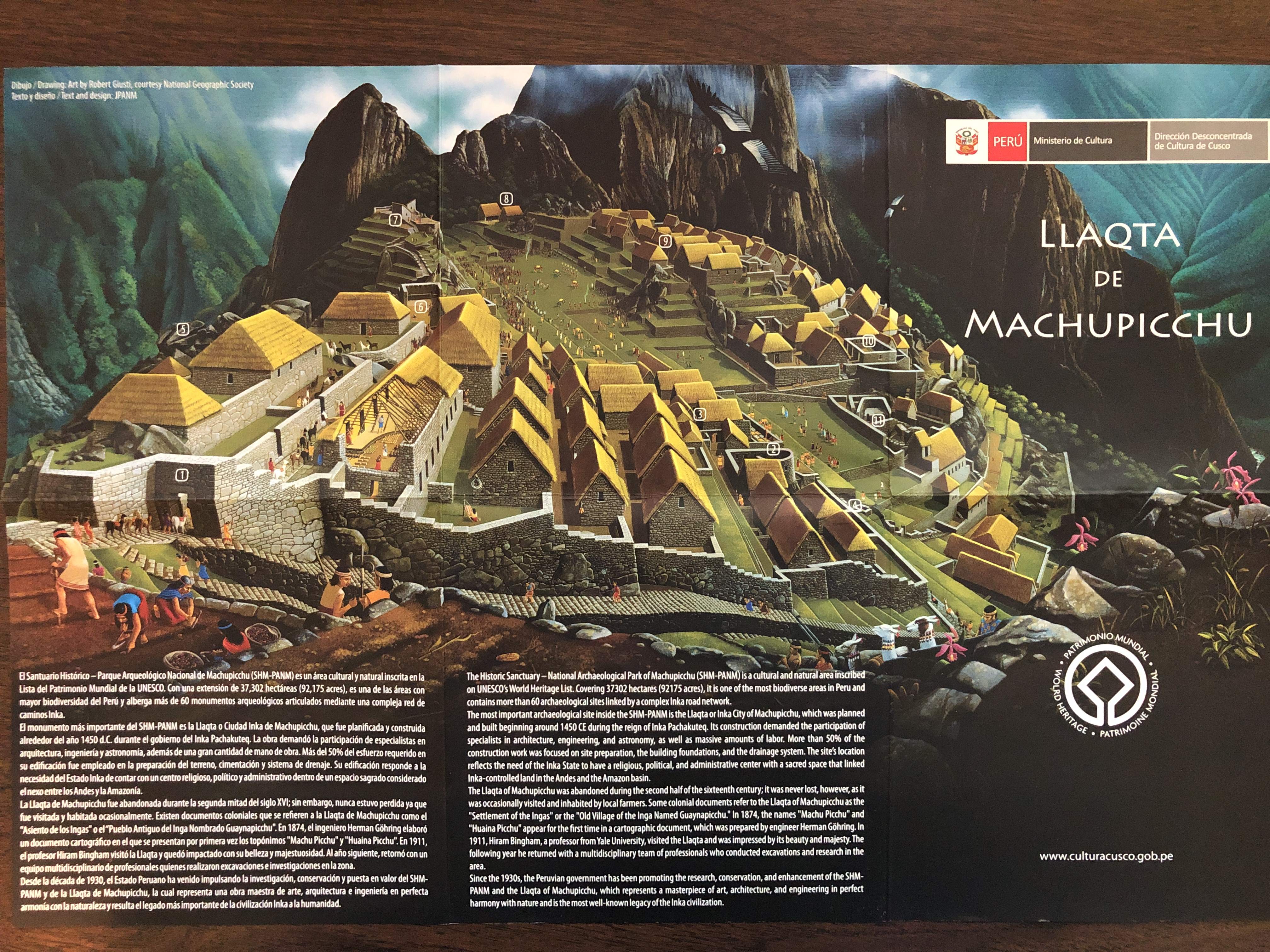
Condors overhead.
Our assistant guide, Jessica, spotted two Condors flying overhead. A special treat to see.
They were pretty high in the sky but I did get a picture of them with a 200mm lens.
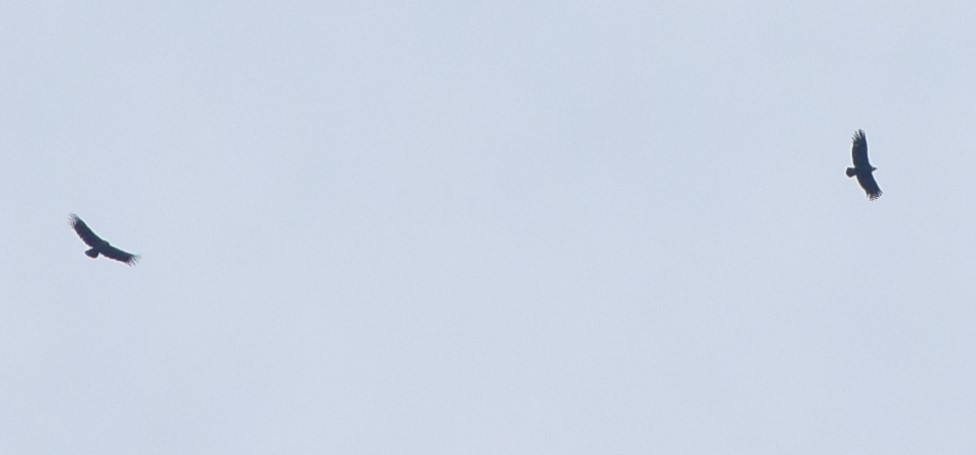
We found Machu Picchu to be quite spectacular. It's bigger than we thought from looking at the usual pictures seen in most publications. The slopes are also very steep. Peru seems to be taking good care of the site with workmen making repairs throughout the site and keeping a close eye on what the tourists are doing. A number of years back you could actually camp inside of the site.
The Torreon (tor-ray-OHN) inside the temple of the Sun. The sun would shine into one of the two windows at the summer and winter solstice. It is located above a royal mausoleum.

A view inside the site.
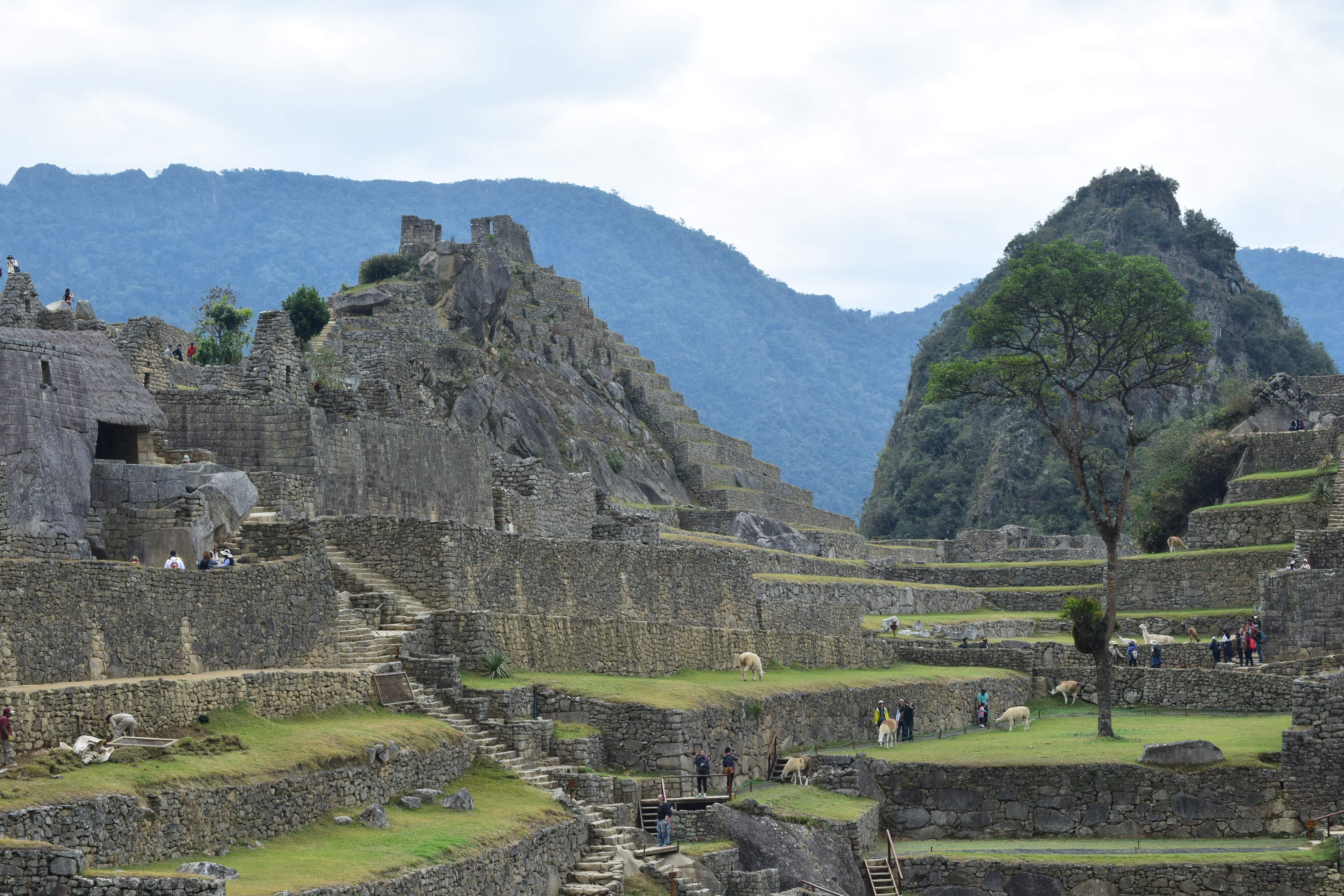
The stones are famous for their fit. Depending on the use for the rocks, temple or workshop or terrance wall etc the quality of the fit changed. We also saw that at least some stones are curved where they fit together to insure a stronger structure. Four centuries and who knows how many earthquakes they are still standing.
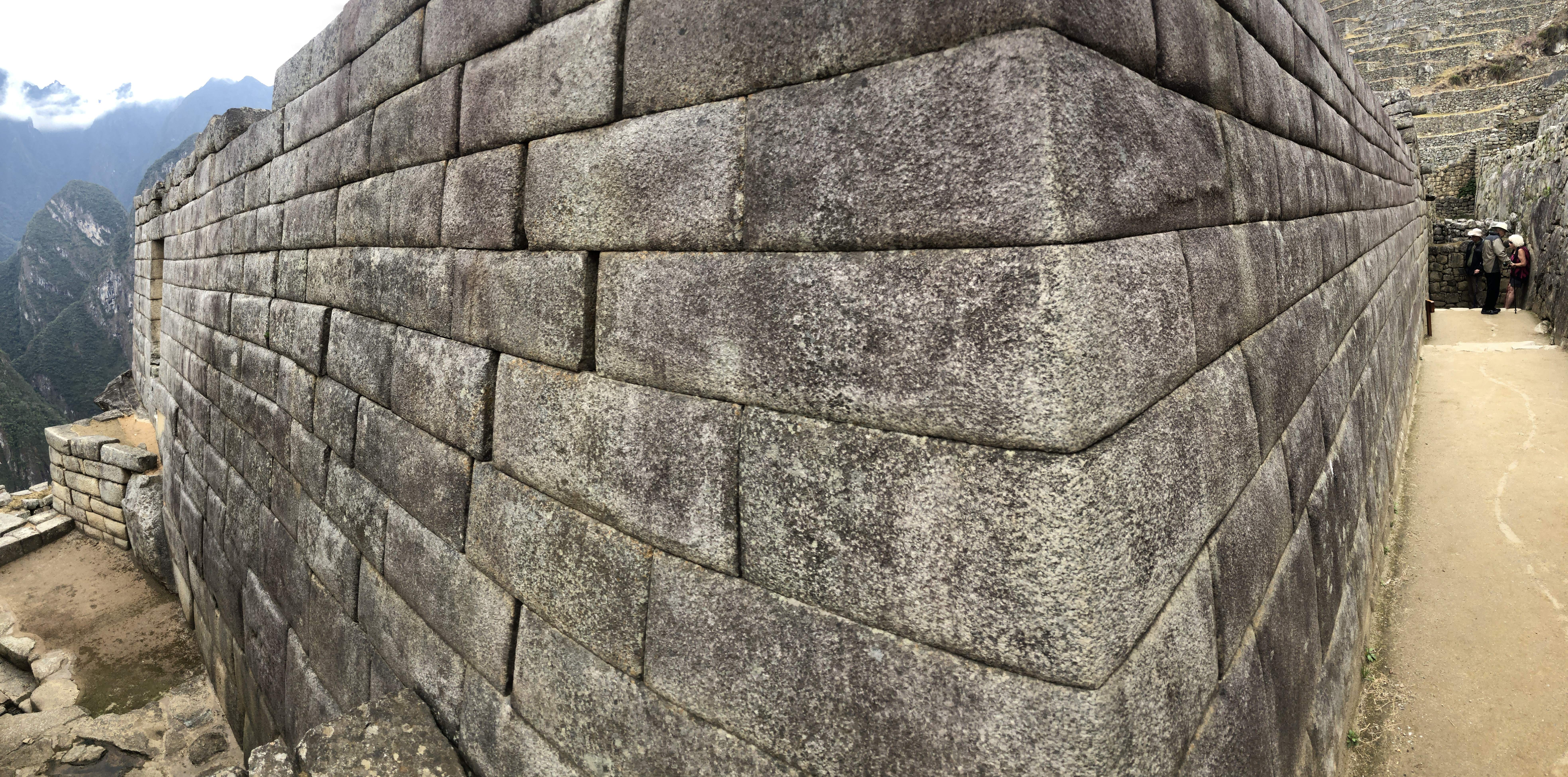
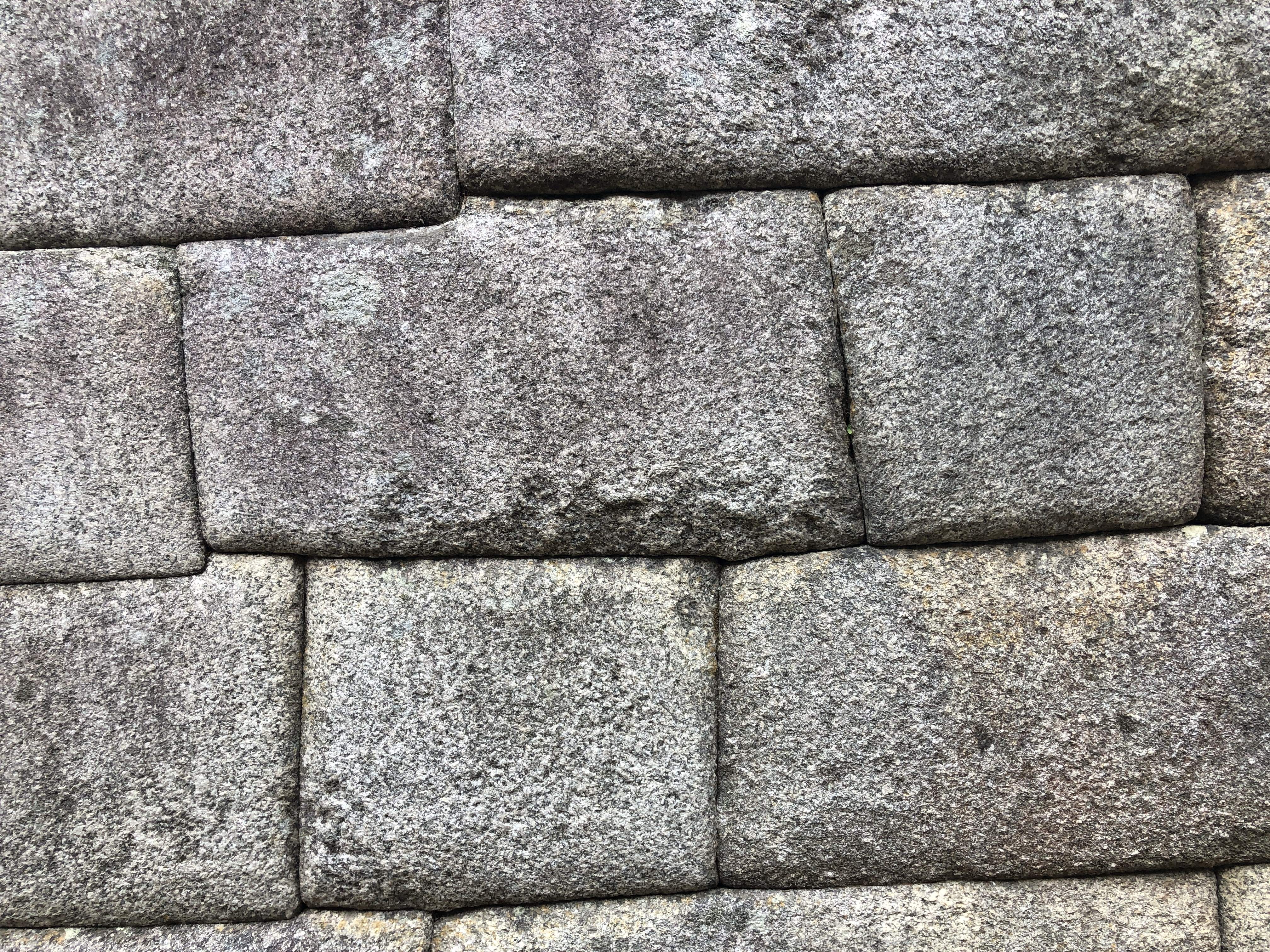
The quarry with Machu Picchu peak in the background. This is inside of Machu Picchu.
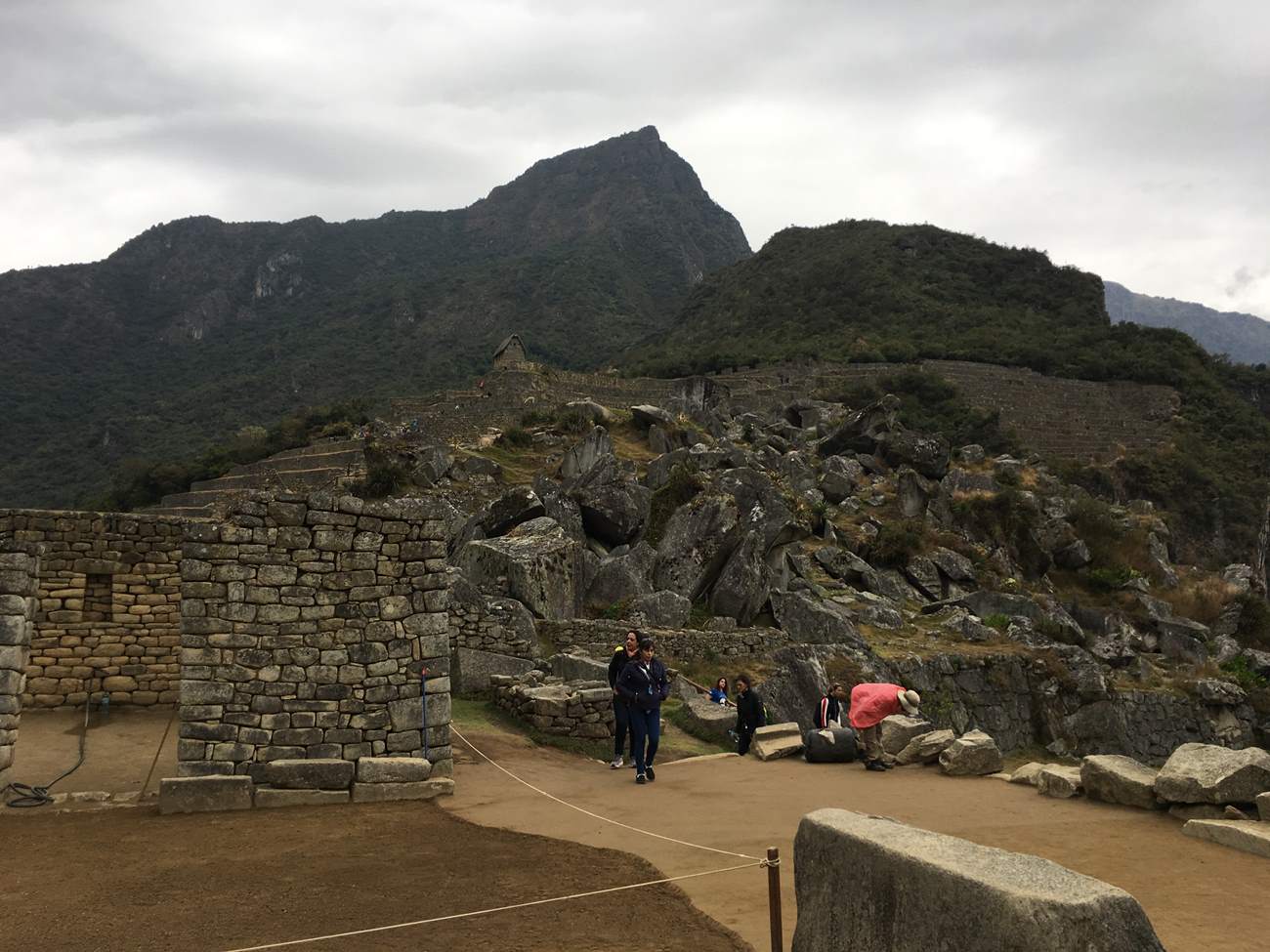
The three windows.
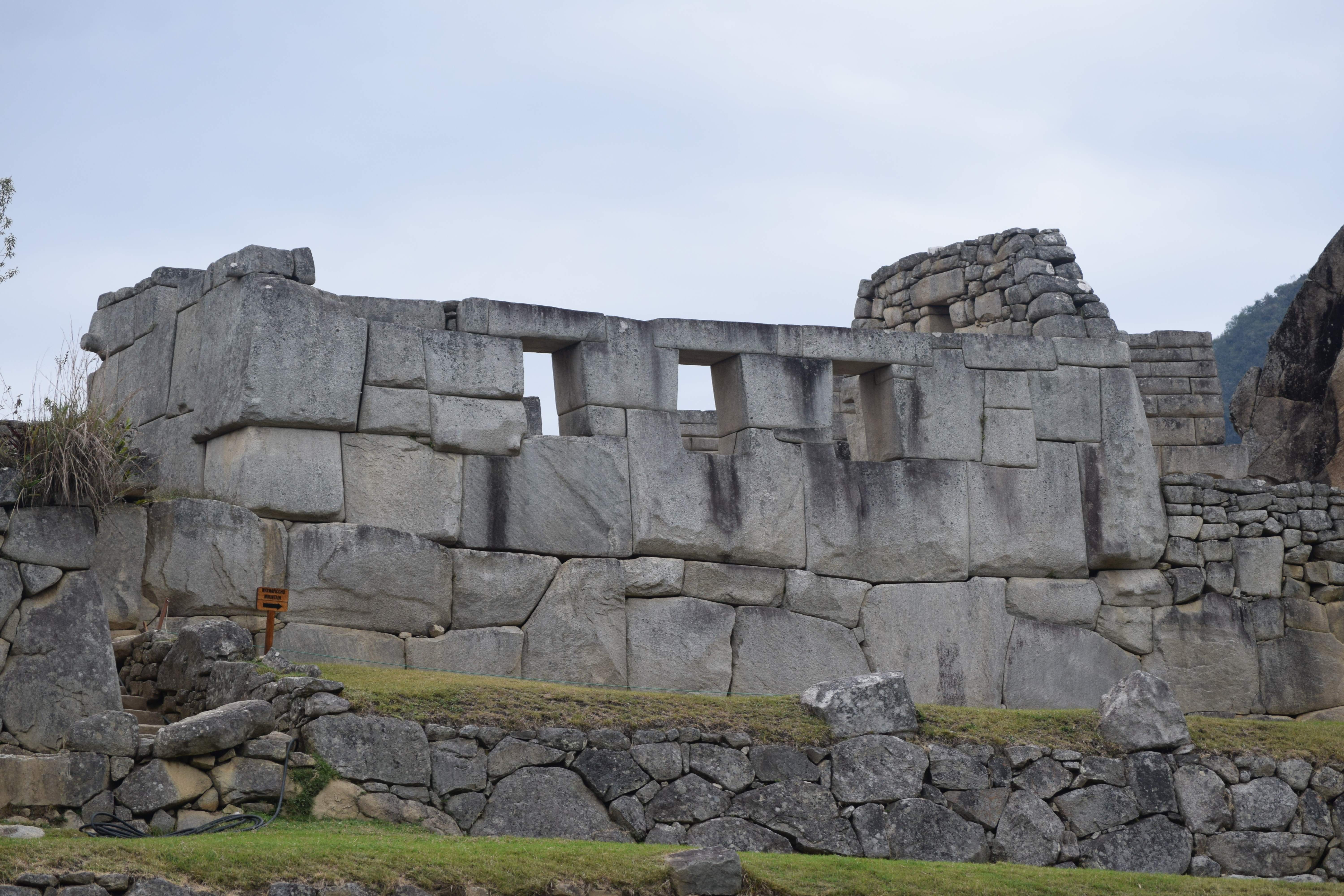
The "backside" of Machu Picchu.

The Inca bridge. The planks across the trail could be pulled up to block access from this trail which we were told heads toward the Amazon region where none friendly tribes resided. The trail is now blocked before the planks to keep crazy tourists from hurting themselves.

The trail is barely visible hanging on the side of the mountain. They don't let you cross the bridge anymore. On either side of the bridge there are small outcroppings called floating steps.
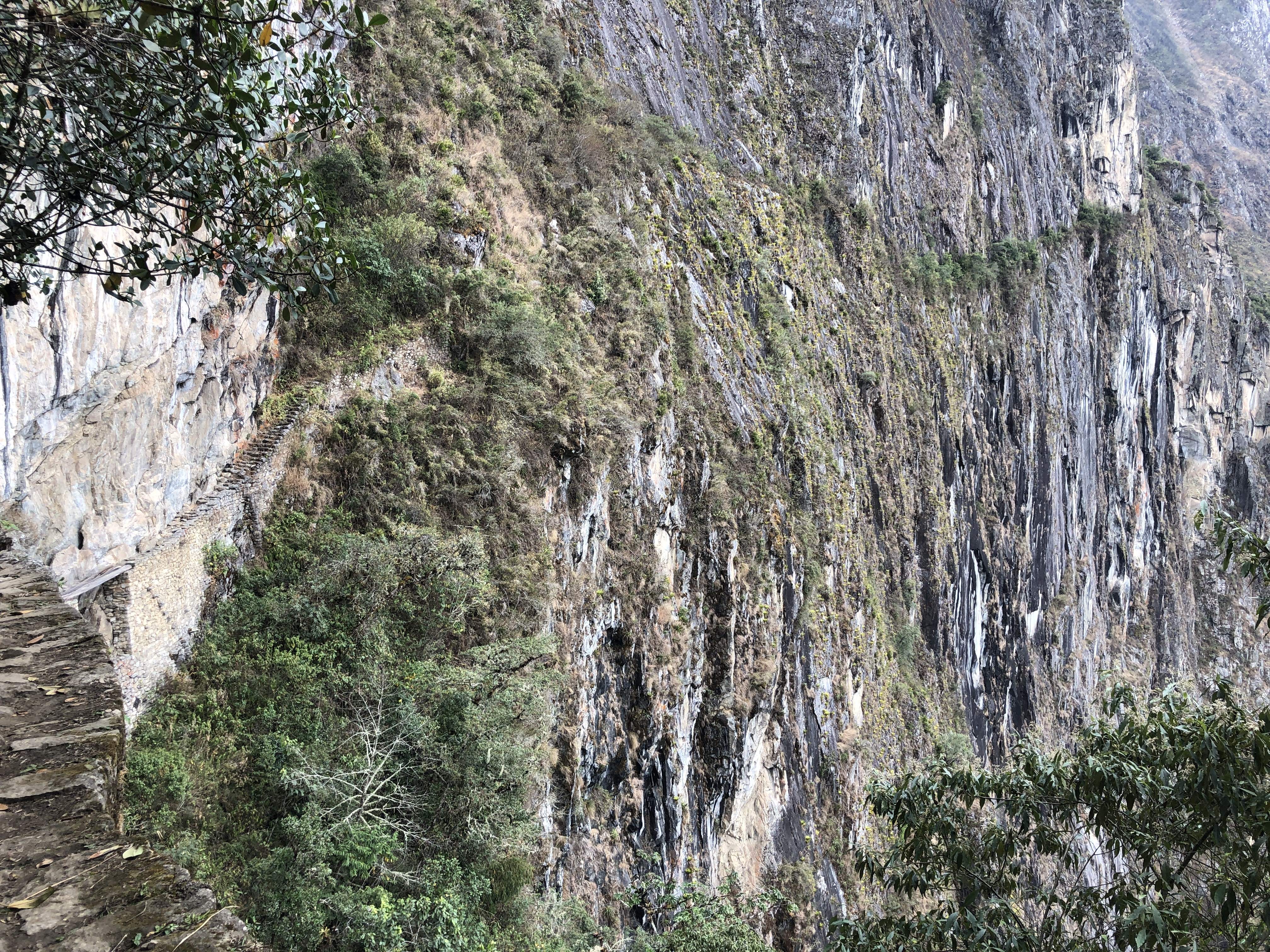
Linda on the Inca Trail on the way to the sun gate.

At the Sun Gate, Intipunku.
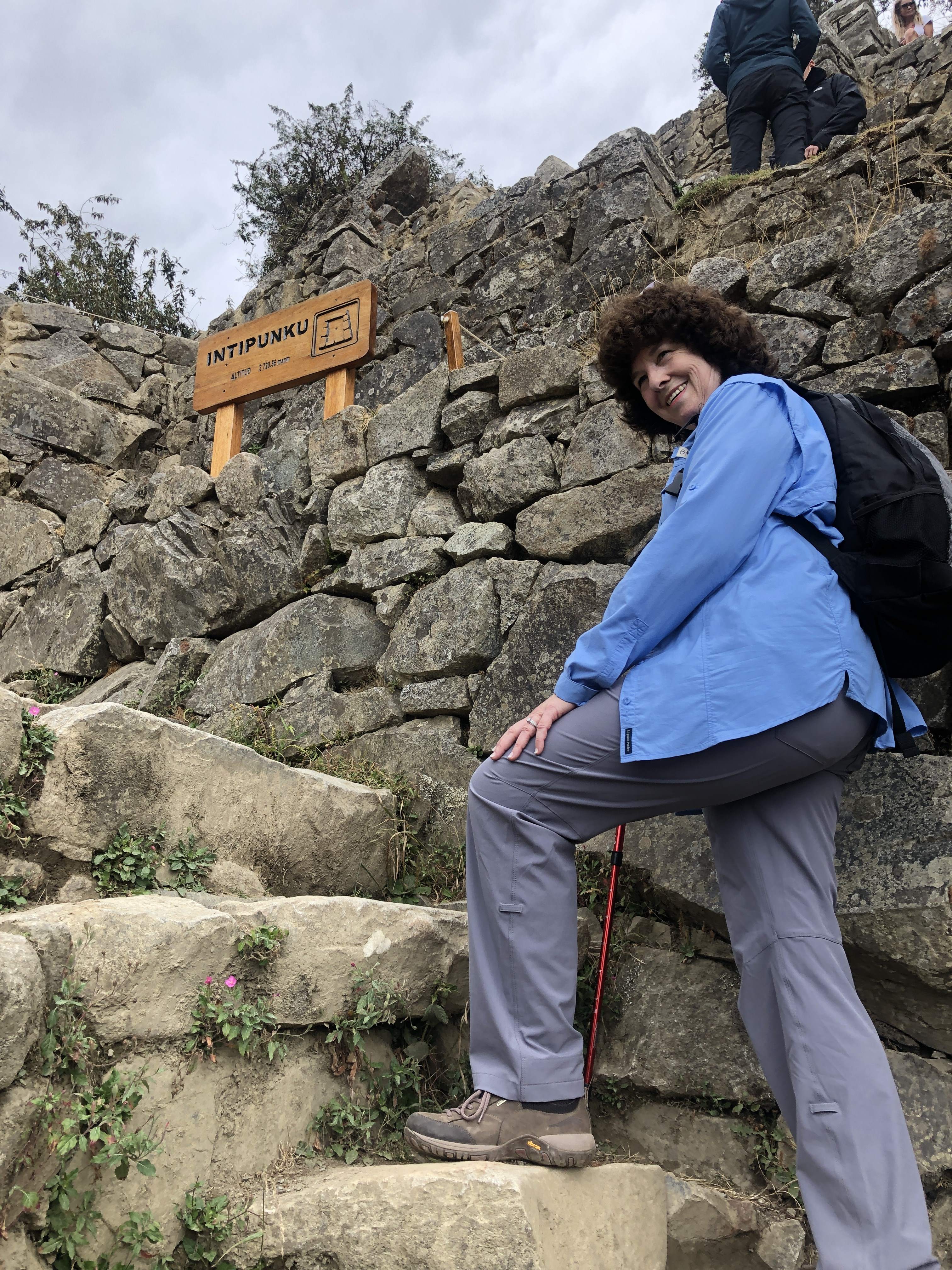
Looking from the sun gate back toward Machu Picchu. The switchbacks in the middle of the picture is the road the buses use to bring tourists from Aqua Calientes. Its two way traffic and the drivers move pretty fast. We would sometimes come around a corner and another bus coming down was right there. They seemed to know automatically who would back up to let the other pass.

The top of Huayna Picchu ((why-nah-PEE-chew) or young man) shows up in most pictures of Machu Picchu but the Inca structures on its top usually don't show. Only 400 people are allowed to go up per day. The Machu Picchu mountain peak is in the opposite direction.
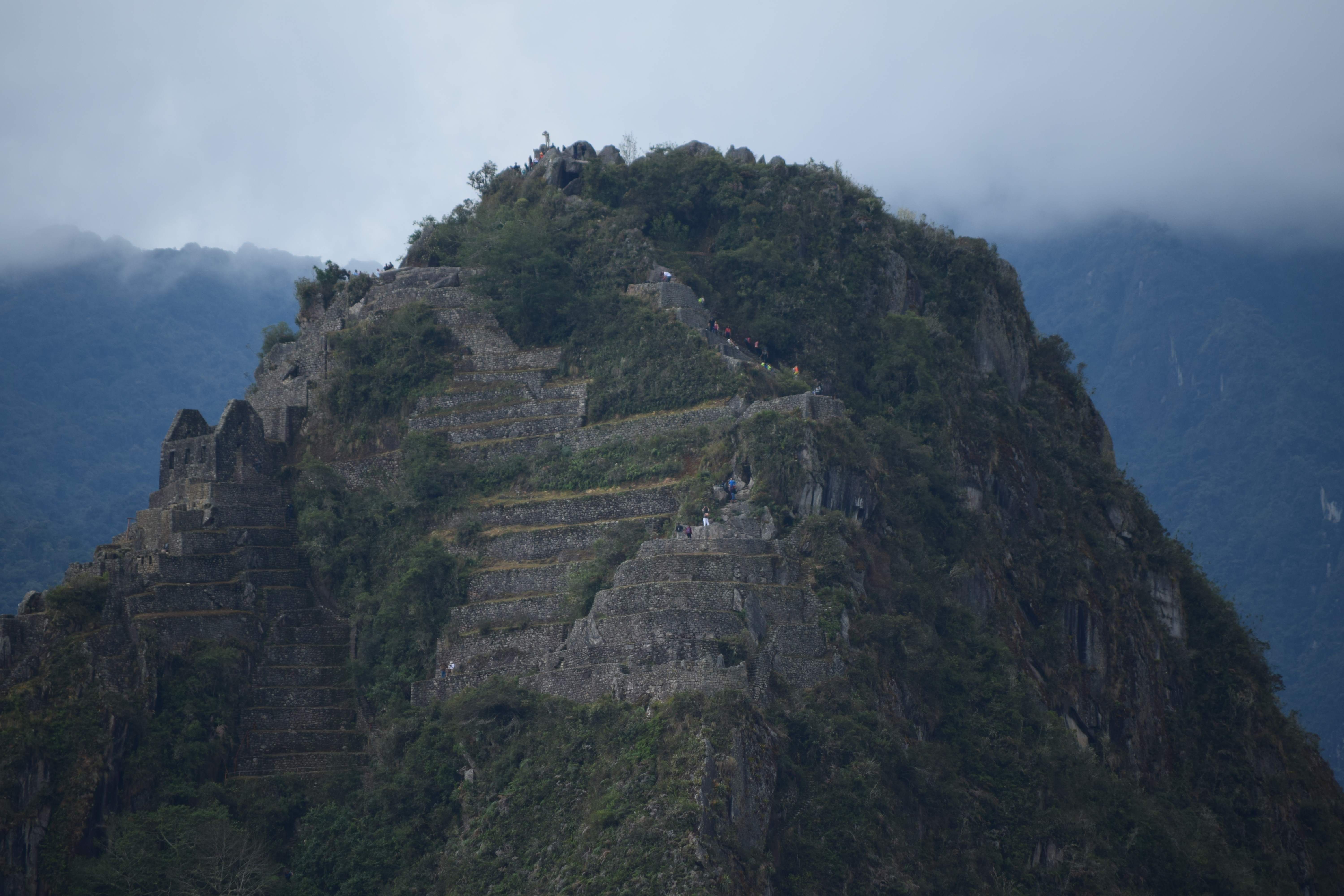
A map.
